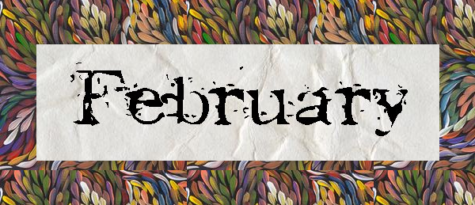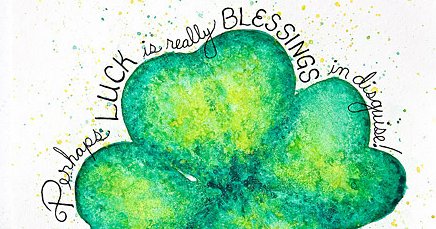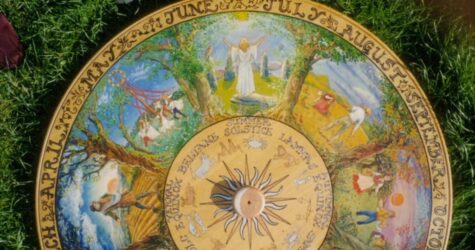February
The Flowers of February are said to be the Primrose, Iris, and the Violet. Whether they are your “birth” flowers or not, these colorful flowers are sure to lift your spirits.
Primrose
With Valentine’s Day at the forefront of everyone’s mind in February, it may come as a surprise that the red rose is not February’s birth month flower. Instead, those born in the second month of the year are linked to the primrose.
The Primrose flower symbolizes patience, kindness and gentleness. The Primrose also brings the meaning of belonging, and nurturing. Primrose is used magically as a symbol to meditate upon to draw protection and love, Oil of primrose has been used to cleanse and purify in the Druidic tradition. This wildflower is also used to symbolize the beloved guest.
If you grow primroses in your garden, take very good care of them. Unhealthy primroses upset the fairies and it is not recommended to have cross fairies. If kept indoors, Primroses are said to bring sickness and sorrow, perhaps this is because they generally do not grow well indoors and upset the fairies.
Though primroses are toxic to dogs, cats, and horses — and may cause vomiting if ingested — primroses are edible for humans. Leaves and flowers may be eaten raw or cooked, used as a herb, or as a garnish. The flowers can be used to make wine and syrup.
An old gypsy cure for skin complaints on the face: take three primrose leaves and boil them in a pint of water, drink the water.
Iris
The February birth flower is the iris. The warm, deep color of the iris is a harbinger of the luxuries of spring, as we know February has long been a month known for romance and love. The iris comes in a few colors including cool blue and snowy white, remembrances of winter.
The iris flower meanings are faith, wisdom, and hope.
There are hundreds of species of the February birth flower, the iris. The iris is a perennial herb. An iris can be grown from a creeping rhizomes or a bulb. The bulb is usually used in drier climates. The iris has been valued since ancient times. There is a flower on the sphinx in Egypt believed to be an iris. Another iris appears on a bas-relief from the 28th Egyptian Dynasty.
In ancient times iris roots were used in perfume and medicine. The fleur-de-lis is a stylized iris, which was used much in heraldry. The February birth flower, iris, is Greek for “rainbow”.
Violets
Not many flowers bloom in February, however, the tiny woodland plants of February brighten the landscape like purple, colorful slippers. Wild violets show off their purple-blue petals and heart-shaped leaves in the coldest months!
The violet has been thought to symbolize modesty, faithfulness, everlasting love, innocence, remembrance. The Ancient Greeks considered the violet a symbol of fertility and love, using it in love potions.
Both Greeks and Romans used the flower for things like herbal remedies, wine, funeral decorations, and to sweeten food. Persians used violets as a calming agent against anger and headaches.
In the Middle Ages, Monks were said to have called them the “Herb of the Trinity” because of their three primary colors—purple, yellow and green.
In the Victorian age, a gift of violets was a declaration to always be true. It still serves as a reminder of loyalty, thoughtfulness and dependability. Give a violet to someone to let them know you’ll always be there for them!
Each color has its own meaning:
- Yellow symbolizes high worth.
- White is for innocence and purity.
- Purple means truth and loyalty.
- Blue is for faithfulness and devotion.
In Christianity, violet flower symbolizes the Virgin Mary’s humility. It is believed that the flowers blossomed when the angel Gabriel told Mary that Jesus would be her baby. In religious art, violets are often portrayed as a symbol of modesty and humbleness.
Sources:
February 9th is the feast day of Saint Apollonia, patroness of dentistry and those suffering from toothache or other dental problems. It is believed that whoever says a prayer to Saint Apollonia should have no pain in his teeth on the day of the prayer.
Her story is as follows:
In a persecution of the Christians, stirred up by ” a certain poet of Alexandria,” she was seized, and all her teeth were beaten out, with threats that she should be cast into the fire ” if she did not utter certain impious words,” whereupon, of her own accord, she leaped into the flames.
This is the prayer:
” O Saint Apollonia, by thy passion, obtain for us the remission of all the sins, which, with teeth and mouth, we have committed through gluttony and speech; that we may be delivered from pain and gnashing of teeth here and hereafter; and loving cleanness of heart, by the grace of our lips we may have the king of angels our friend. Amen.”
— W. G. Willis Watsox.
There is a lot to celebrate in February. This is a list of pretty much everything that goes on during the second month of the year. Many of these dates change from year to year. The days that change are marked with this » symbol.

February Lore and General Info:

Astronomical Events
- 1 » New Moon
- 16 » Full Moon –Full Snow Moon or Quickening Moon, Ash Moon
Astrological Events
Depending on which astrological system you adhere to, these are the signs that show up in February of 2022. Be aware that some of these dates will vary from year to year. Unlike the Sun signs which might just shift by 1 or 2 days, the dates of the various Moon signs will vary widely from year to year. The same holds true for the Chinese Zodiac. The Celtic Tree Signs are based on an arbitrary system and stay the same from year to year.
Western Astrology
The February Sun begins in Aquarius and finishes up in Pisces:
- Aquarius: Jan 20 thru Feb 18 » Sun in Aquarius
- Pisces: Feb 18 thru Mar 20 » Sun in Pisces
The February 2022 Moon cycles through the signs as follows. You will notice that the Moon might begin the day in one sign and by the end of the day may have moved into another sign, so timing matters if you are wanting to be precise:
The moon cycles through the signs are as follows:
- Aquarius: 31 thru Feb 2 » Moon in Aquarius
- Pisces: Feb 2 thru Feb 4 » Moon in Pisces
- Aries: Feb 4 thru Feb 6 » Moon in Aries
- Taurus: Feb 6 thru Feb 9 » Moon in Taurus
- Gemini: Feb 9 thru Feb 11 » Moon in Gemini
- Cancer: Feb 11 thru Feb 14 » Moon in Cancer
- Leo: Feb 14 thru Feb 16 » Moon in Leo
- Virgo: Feb 16 thru Feb 19 » Moon in Virgo
- Libra: Feb 19 thru Feb 21 » Moon in Libra
- Scorpio: Feb 21 thru Feb 23 » Moon in Scorpio
- Sagittarius: Feb 23 thru Feb 25 » Moon in Sagittarius
- Capricorn: Feb 25 thru Feb 27 » Moon in Capricorn
- Aquarius: Feb 27 thru Mar 1 » Moon in Aquarius
The Celtic Tree Signs in February:
- Rowan: Jan 21 thru Feb 17 – Rowan Tree Month
- Ash: Feb 18 to Mar 17 – Ash Tree Month
The Alternative Celtic Zodiac is as follows:
- Poplar: Feb 1 – Feb 10
- Larch: Feb 11 – Feb 20
- Pine: Feb 21 – Mar 2
The Chinese Calendar and Zodiac
The month of February begins in the Chinese Year of the Rat. The year of the Ox (sometimes referred to as the Cow) kicks in on February 12th (Chinese lunar New Year Day) and lasts until January 31st, 2022. This will be a White Metal Ox year. Each Month is also assigned a specific animal. Here’s what shows up in February 2021.
- Cow: Jan 5 – Feb 2 (Chinese Zodiac)
- Cow: Jan 13 – Feb 4 (Lunar Calendar – 12th Lunar Month)
- Tiger: Feb 4 – Mar 4 (Chinese Zodiac)
- Tiger: Feb 4 – Mar 2 (Lunar Calendar – 1st Lunar Month)
Note: The traditional Chinese Astrology birth chart is built by the Chinese Stem Branch Calendar, not the Chinese Lunar Calendar, which I think is really confusing. Because of a difference in time zones, the lunar months will have different pattern between China and the USA.

Lucky and Unlucky Days
You might want to plan moving, traveling, major purchases, court dates, and weddings around these dates, avoiding the unlucky days and utilizing the lucky ones.
- These are the lucky days in February:
11, 21, 25, and 26. - These are the unlucky days in February:
1, 3, 7, 9, 12, 16, 17, 18 and 23.
Fatal Days
The fourth day bringeth down to death,
The third will stop a strong man’s breath.
Quick Good Luck Chant
Bad luck turn and
Bad luck flee.
Only good fortune
Comes to Me.
Place a pinch of salt on your left shoulder.

Holidays and Holy Days
Many of the holidays begin on the eve of the night before and end on the eve of the day of. It’s also important to remember that the dates of archaic festivals and feast days may vary widely depending on the source.
February 1
- 1 » The Noumenia
- 1 » Chinese New Year – Year of the Black Water Tiger begins
- 1: Vasant Panchami
- 1: Là Fhèill Brìghde
- 1: Imbolc Eve
- 1 thru 2 » Mauni Amavasya
- 1 thru 14: Old Greek Festival of Dionysus.
February 2
- 2 » Celebrating The Agathos Daimon
- 2: Groundhog Day
- 2: The Bear Wakes Up
- 2: Disting – The Charming of the Plow – dates vary
- 2: Candlemas
- 2: Imbolc
- 2: Lammas or Lughnasadh (Southern Hemisphere)
- 2: Yoruba/Santeria feast of Oya, Orisha of Death and Rebirth.
February 3
- 3: Setsubun
February 4
- 4: King Frost Day
- 4 » Spring begins (Chinese Farmer’s Calendar)
- 4 » The month of the Tiger begins – (Chinese Zodiac)
February 5
- 5 » Burning the Hom Strom
- 5: Tibetan New Year
- 5 » Saraswati Day (Bali), in honor of Batari Dewi Saraswati, the goddess of knowledge. No reading or writing is allowed on this day, books are taken to the goddess to be blessed. Dates vary.
- 5 » Sarasvati Puja – Vasant Panchami. Dates vary.
- 5: Fornacalia – The Day of the Ovens – anytime between Feb 5 and Feb 17
February 6
February 7
- 7 » Everyman’s Birthday
- 7: Day of Selene
February 8
- 8: Festival for the Broken Needles
- 8: Nirvana Day – celebrated on Feb 15 in some areas
- 8: Hari Kuyo, Japan
- 8: Kite Flying Day
February 9
- 9: Feast of Apollo
February 11
- 11: Pattern Day
- 11 » Day of Ekadashi
- 11 thru 13: The Anthesteria
February 12
- 12: Festival of Artemis – the Greek goddess of the hunt
- 12 thru 14: Borrowed Days (see also March 29-31)
February 13
- 13: Get a Different Name Day (Thomas Roy’s Calendar)
- 13 thru 21: The Parentalis – festival to honor the spirits of the ancestors
February 14
- 14: St. Valentine’s Day
- 14: Feast of Vali
February 15
- 15: Sigfrid’s Day
- 15 » Chinese Lantern Festival – 15th lunar day of 1st lunar month
- 15: Lupercalia – the festival of Lupercus, the Roman god of flocks and fertility.
- 15: Kamakura Day
February 16
- 16 » The Great Fifteenth
February 17
- 17 : Feast of Shesmu
- 17: Toshigoi – Shinto rite honoring the Kami and offering prayers for a bountiful rice harvest.
- 17: Festival of Quirinus – god of war, storms and thunder
February 18
- 18 and 19: Spenta Armaiti (Zoroastrian)
February 19
- 19 » Rain Water (Chinese Farmer’s Calendar)
February 20
- 20: Day of Tacita
February 21
- 21: Feralia – an ancient Roman Day of the Dead
- 21: Toshi-goi-no-Matsuri known (also as the Yakuyoke festival) – Shinto rite honoring the Kami and offering prayers for a bountiful rice harvest.
February 22
- 22: Caristia – Roman holiday of family reunions
February 23
February 24
- 24: Flight of the King – Regifugium
February 25
- 25: Day of Mut
February 26
- 26: Day of Nuit
- 26 » Dakini Day (Tibetan)
- 26: Hygeia’s Day
February 27
- 27 » Meatfare Sunday
- 27 » Transfiguration Sunday
February 28
- 28: Saxon Cake Day – cakes offered to the God and the Goddess.
- 28 » Bun Day or Bolludaguror
- 28: Kalevala Day – the epic poem, Kalevala is celebrated by the Finns.
- 28: Old Slavic Velja Noc – Spirits of the dead visit their living relatives, overseen by Veles, Lord of the Dead.
- 28 thru Mar 2 » Melasti (Bali) – A purification ceremony that takes place at the beach several days prior to Nyepi

Saint Days
There is a surprising amount of magick associated with Saint days This is a very short list of the Saint days in February, there are many many more. As time goes by I may end up listing them all, but for now, this is what I have.
- 2: Saint Brighid’s Day
- 3: St. Blaze Day
- 3: St. Anskar’s Day
- 3 thru 5: Festival of Saint Agatha
- 4: Feast of St. John de Brito
- 5: St Agatha’s Day
- 9: St. Apollonia’s Day
- 11: St. Caedmon’s Day
- 14: St. Valentine’s Day
- 18: Feast of Our Lady of Lourdes

Recipes For February
- Breasts of St Agatha – St Agatha’s Day
Many more seasonal recipes, including recipes for new and full moon ceremonies, ancient Greek and Roman holidays, Asian festivals and etc can be found here: Seasonal Recipes.

Notes:
Any February lore, almanac, astrological, and celebration dates that have been shared after this post was published can be found by searching the February posts to see what’s new.
A lot of work went into this post. It was compiled from various sources by Shirley Twofeathers for The Pagan Calendar, you may repost and share without karmic repercussions, but only if you give me credit and a link back to this website. Blessed be.
壬寅 Ren-Yin is the Chinese zodiac name of the Stem-Branch calendar for 2022. Each zodiac is labeled with a name of Yin-Yang Five Elements. Ren is Yang-Water. Yin is Tiger. Therefore, the name of 2022 is called Yang-Water Tiger. The color of the Water is Black in the Chinese Five Elements theory. 2022 is the Yang Black Water Tiger year.
Using Stem-Branch to count for Month, Hour, and Year sequences began around 206 B.C. during the Chin dynasty and Han dynasty. Using the season-changing information, Chinese Yin-Yang Five Element scholars converted all zodiac signs into five elements. The theory of the Five Elements becomes the foundation of Chinese fortunetelling.
The Chinese Zodiac dates back to the Qin Dynasty over 2000 years ago. As the legend goes, the Jade Emperor challenged all the animals in the Kingdom to a “Great Race.” Whoever arrived at his palace first would win his favor. The Tiger was sure that he had the race in the bag, but ended up placing third after the cunning Rat and workhorse Ox snuck in ahead of him. Thus, Tigers are extremely competitive people, known for their courage and ambition. Tigers are ambitious, but they’re also extremely generous with a drive to help others. Tigers want to win but they’re also always seeking justice.
Were you born during the Year of the Tiger?
If you were born in 1926, 1938, 1950, 1962, 1974, 1986, 1998 or 2010, you were born during the Year of the Tiger (unless your birthday falls in January, in which case, you’ll need to double check just to be sure).
Famous people born during Tiger years include Queen Elizabeth II, Christopher Lloyd, Stevie Wonder, Martin Short, Jon Bon Jovi, Leonardo DiCaprico, Penelope Cruz, Lady Gaga, Jon Batiste and Shawn Mendes. That’s some mega-talented company!
So what’s in store for the Year of the Tiger?
The Year of the Rat (2020) was about survival, and the Year of the Ox (2021) was about anchoring ourselves in a new reality. The Year of the Tiger will be about making big changes. This will be a year of risk-taking and adventure. We’re finding enthusiasm again, both for ourselves and for others. Everyone is fired up, generosity is at an all-time high and social progress feels possible again.
The Tiger is associated with Yang (masculine, active) energy. Tigers do things their own way and hate being told what to do. Expect things to rapidly change this year. Sudden disruptions in career, romance and home life should be expected. Some of us will thrive through taking great leaps, while others might crash and burn. So while it’s important to follow our intuition and run with our wildest dreams, that means we also have to keep our egos in check.
In addition to the animals, the Chinese Zodiac also cycles through five elemental types. So, this is not only the Year of the Tiger, it’s the year of the Water Tiger. Water years bring out our emotions more than any of the other elements. Water Tigers are family-oriented and have wonderful interpersonal relationships. Though they’re extremely driven and can be brash, their goal is always to do what’s best for everyone, not just for themselves.
Overall, this is a year for switching careers, building teams or getting back into creative projects. Life is short so why not be happy?
What brings Tiger luck this year?
Chinese zodiac follows that certain symbols, directions and colors are auspicious for each zodiac sign. This can apply to those born as that sign as well as for all of us during that particular zodiac year. During the Year of the Tiger those are:
- Colors: Blue, Green,
- Numbers: 1, 3, 7
- Flowers: Plum Blossom
- Direction: North
Black Water Tiger Attributes
Yang-Water is running water, river, waterfall, or ocean. Yang-Water is male and it can become flood discharge, storm rain, or surging ocean. Water is connected to wisdom in the Chinese Five Element theory. The characteristics of Yang-Water are talented, wise, acute, agile, restless, and progressive. In Chinese I-Ching, Water is connected to danger. The other traits of Yang-Water are severe, unforgiving, uncharitable, and provocative. Yang-Water is the 9th Element of 10 Heavenly Stems.
- The color of Yang-Water is black or dark blue.
- The location of Yang-Water is in the north.
Yang-Wood. Tiger is in the Wood group according to the Chinese Five Element theory. Tiger is Yang-Wood, which is the big tree in the spring. Tiger month is February, the beginning month of the spring season. The weather is still a little cold. The Wood of Tiger waits for the warm weather to grow up. Tiger is a carnivore. It is often alone, not gregarious, and difficult to get along. Tiger has a domineering temper and authoritative air. The characteristics of Tiger are bold, resolute, unyielding, dictatorial, arbitrary, ambitious, and full of self-confidence.
Yang-Wood of Tiger is related to tall trees, large Wood structures, or landmarks. Tiger also contains some Yang-Fire, which is connected to the sun, mighty power, or public figure. So Tiger has good leadership. It can start a business from scratch. It usually will suffer growing pain. Tiger likes the heat of Yin-Fire and Fire of Horse to bring up its energy. Tiger doesn’t like Pig and Monkey to bring down its passion and vitality.
Yang-Water is connected to the running water, river, or waterfall. The sign of the Yang-Water Tiger is a Tiger walking in the river. Tiger contains mainly Yang-Wood and also contains some Yang-Fire and Yang-Earth. Yang-Wood is a tall tree. A tall tree standing on the river is a sign of limitation, resolute, unyielding, or settling down. Yang-Wood is also connected to the big wooden boat. A boat on the river is a sign of traveling, relaxing, and resting. It’s a period of recharging energy.
- Tiger month is February.
- Tiger hour is from 3 a.m. to 5 a.m.
Tiger is still a little bit chilly. Tiger doesn’t have enough heat for Yang-Water. Yang-Water Tiger needs more Fire to have a prosperous life. It’s hard for Yang-Water Tiger to save money without Fire. Investment in real estate is a good policy for money management.
Black Tiger and the God of Wealth
The three major events during the Chinese New Year festival are Chinese New Year‘s Day, Chinese New Year’s Eve, and the Chinese Lantern Festival. The 4th important event should be the Welcome God of Wealth Day, which is on the 5th lunar day of the lunar year. Traditionally, companies and stores will open the business on the God of Wealth Day after the Chinese New Year statutory holidays.
Who is the God of Wealth? Different businesses have their icons of wealth. General Chao Kung-Ming, who rides on the back of the black Tiger, is one of the Gods of the Wealth. General Chao is a character in the novel of Feng-Shen Bang, (The Investiture of Gods), which is a legendary story about the war between the Shang Dynasty and Chou dynasty (around 1046 BC).
Chao Kung-Ming was the god of battle. His magic power can administer the wind, thunder, and rain. He defeated many wizards, sorcerers, and deities. But he was killed in the end after losing his magic weapons. After his death, Chao Kung-Ming was delegated as the officer in charge of the properties, such as gold, jewelry, and treasures. He also has the authority to give people fortune and happiness. More story about Chao Kung-Ming and other Gods of the Wealth is on the “The Chinese God of Wealth” page.
General Chao’s Black Tiger was a ferocious carnivore. Since the wild Tiger ate quite a few humans and livestock, many people tried and failed to kill it. Chao Kung-Ming tamed the Black Tiger to save people’s life. The Black Tiger implies the arrival of the God of the Wealth.
Source:
In ancient Europe, the winter’s ice began to thaw during the Celtic Month of Ash Moon. People ventured out of their homes and villages for the first time since the darkening days of late autumn. It is perhaps for this reason that this month is linked with journeys of all kinds. Energy directed now should focus on transformation, moving you into a new space either physically or spiritually.
The month of the Ash Moon is a good time to start planning your summer holiday and to acclimatize your body to spending time outside. Cast energy forward that takes your inner energies on an excursion by harnessing natural forces, such as floating wishes downstream in a paper boat, or blessing a feather and letting it fly on the wind. Valentine’s Day also occurs near the time of the Ash Moon, so cast love energy that focuses on sharing your journey in the year ahead with someone special.
- Dates: February 18 – March 17
- Irish/Gaelic name: Nuin, Nion
- Themes: Balance, Endurance, Strength, Protection.
- Language of Flowers: Grandeur
- Qualities: Balance, Stability, Strength, Protection, Connection, Vitality, Fertility, Justice, Wisdom, Connection
- Associated With: Prophetic Dreams and Spiritual Journeys.
Ash is one of our mightiest trees. A huge physical specimen when mature, and also a tree with some of the most impressive myth, meaning and folklore around it.
In ancient Europe, Ash trees were enormous, towering high above the landscape with a thick trunk and deep roots. The Celts interpreted three distinct things from this tree, expansion, growth, and higher perspective. The incredibly complex root system also symbolized remaining grounded despite how much growth was taking place in one’s life.
This belief was perfectly aligned with the esoteric message of the ash. The Druids and the Norse peoples believed all the realms were connected via branches of a giant mystical ash tree known as Yggdrasil.
This World Tree, Yggdrassil, was an almighty ash tree that joined together the heavenly realms in its branches, the earthly realms in its trunk, and the realms of the underworld through its roots.
The spear of Odin was made from the branch of this tree, which is also known by the Celtic name Nion, pronounced knee-un. One of three trees sacred to the Druids (Ash, Oak and Thorn), the month of the Ash tree is a good month to do magic that focuses on the inner self and spells that focus on spiritual journeys, and prophetic dreams.
The wood of the ash tree was used extensively in ritual practices as it burned with an intense heat, even when green. The ash was often the Yule log – feted and decorated as it was brought into the home, farmstead, or inn, fed mead or wine and then burnt on the hearth with the charred remains kept as kindling for next year’s Yule log. The ashes of the Yule log were often used to protect the home from lightning.
The most productive magickal tools are made from the branches of the Ash tree. Ash has also historically been used to make staffs or staves. An early Iron Age find on the Isle of Anglesey in Wales was a staff of ash with a ribbon of copper spiraling around it, thought to be a druid’s staff. It’s also the wood traditionally used for witches’ broomstick handles (birch for the brush part).
Ash is very much associated with rain and water, especially with thunderstorms and their associated downpours. Thor, the god of thunder had a spear of ash. It’s thought that the tall height of the ash tree may attract lightning.
A country rhyme tells us:
“Avoid an ash,
for it courts a flash”
While its association with wet weather is recognized in the old weather lore:
“Ash before the oak,
We shall surely get a soak,
Oak before the ash,
We shall only get a splash”
The Greek god of the sea and storms, Poseidon, was also associated with the ash tree. The Norns watered and tended to the tree and covered its bark with clay to protect it. They also gave the (burnt) fruit of the tree to women in childbirth and so it is associated with childbirth as well.
The ash tree is about balance and stability. Its roots grow to the same size as its branches which means the tree is very stable and grounded with a good inner balance. As the World Tree, it provides balance between the earthly realm, the heavens, and the underworld.
Ash provides strength, endurance, and protects what we hold dear. It is justice, protection, and healing. It is life-giving rain and fertility in spring.
Ash the Enchanter
Free thinkers are born under the Ash Celtic tree astrology sign. They possess vivid imagination, intuition and their second nature is to be artists. They can see the world crystal clear, but have the tendency to be moody and withdrawn at times. Don’t think that they have some sort of a bipolar disorder. It’s all due to the fact that their inner world is constantly moving and changing.
These enchanters from the Ash sign are drawn towards art, writing, spiritual matters, and even science. Good partners for this Celtic tree astrology sign are the Willow and Reed signs.
Walking meditation
Practicing this technique during the Ash Moon will free your mind from stress and attract solutions to your problems. You will need a smudge stick, a bunch of herbs – usually white sage – that is used to ‘smudge’ or cleanse an area with smoke.
Light a smudge stick, then take time to relax and breathe deeply. Direct the smoke around your body, taking time to cleanse your aura, and say,
“Spirit I walk this journey and invite you to join me.
May each step be sacred.”
Set out on a walk that takes you through nature. Everything on your journey has a message for you, so relax and enjoy it.
On your return write down any animals you encountered and unusual sights or flashes of inspiration you received.
Sources:
There is a lot to celebrate in February. This is a list of pretty much everything that goes on during the second month of the year. Many of these dates change from year to year. The days that change are marked with this » symbol.
February Lore and General Info:
Astronomical Events
- 11 » New Moon
- 27 » Full Moon –Full Snow Moon or Quickening Moon
Astrological Events
Depending on which astrological system you adhere to, these are the signs that show up in February of 2021. Be aware that some of these dates will vary from year to year. Unlike the Sun signs which might just shift by 1 or 2 days, the dates of the various Moon signs will vary widely from year to year. The same holds true for the Chinese Zodiac. The Celtic Tree Signs are based on an arbitrary system and stay the same from year to year.
Western Astrology
The February Sun begins in Aquarius and finishes up in Pisces:
- Aquarius: Jan 19 thru Feb 18 » Sun in Aquarius
- Pisces: Feb 18 thru Mar 20 » Sun in Pisces
The February 2021 Moon cycles through the signs as follows. You will notice that the Moon might begin the day in one sign and by the end of the day may have moved into another sign, so timing matters if you are wanting to be precise:
The moon cycles through the signs are as follows:
- Libra » Feb 1 – Feb 3: Moon in Libra
- Scorpio » Feb 3 – Feb 5: Moon in Scorpio
- Sagittarius» Feb 5 – Feb 7: Moon in Sagittarius
- Capricorn» Feb 7 – Feb 10: Moon in Capricorn
- Aquarius » Feb 10 – Feb 12: Moon in Aquarius
- Pisces » Feb 12 – Feb 14: Moon in Pisces
- Aries » Feb 14 – Feb 17: Moon in Aries
- Taurus » Feb 17 – Feb 19: Moon in Taurus
- Gemini» Feb 19 – Feb 22:Moon in Gemini
- Cancer » Feb 22 – Feb 24: Moon in Cancer
- Leo » Feb 24 – Feb 26: Moon in Leo
- Virgo » Feb 26 – Feb 28: Moon in Virgo
- Libra » Feb 28 – Mar 2: Moon in Libra
The Celtic Tree Signs in February:
- Rowan: Jan 21 thru Feb 17 – Rowan Tree Month
- Ash: Feb 18 to Mar 17 – Ash Tree Month
The Alternative Celtic Zodiac is as follows:
- Poplar: Feb 1 – Feb 10
- Larch: Feb 11 – Feb 20
- Pine: Feb 21 – Mar 2
The Chinese Calendar and Zodiac
The month of February begins in the Chinese Year of the Rat. The year of the Ox (sometimes referred to as the Cow) kicks in on February 12th (Chinese lunar New Year Day) and lasts until January 31st, 2022. This will be a White Metal Ox year. Each Month is also assigned a specific animal. Here’s what shows up in February 2021.
- Cow: Jan 5 – Feb 2 (Chinese Zodiac)
- Cow: Jan 13 – Feb 12 (Lunar Calendar – 12th Lunar Month)
- Tiger: Feb 3 – Mar 4 (Chinese Zodiac)
- Tiger: Feb 12 – Mar 12 (Lunar Calendar – 1st Lunar Month)
Note: The traditional Chinese Astrology birth chart is built by the Chinese Stem Branch Calendar, not the Chinese Lunar Calendar, which I think is really confusing. Because of a difference in time zones, the lunar months will have different pattern between China and the USA.
Lucky and Unlucky Days
You might want to plan moving, traveling, major purchases, court dates, and weddings around these dates, avoiding the unlucky days and utilizing the lucky ones.
- These are the lucky days in February:
11, 21, 25, and 26. - These are the unlucky days in February:
1, 3, 7, 9, 12, 16, 17, 18 and 23.
Fatal Days
The fourth day bringeth down to death,
The third will stop a strong man’s breath.
Holidays and Holy Days
Many of the holidays begin on the eve of the night before and end on the eve of the day of. It’s also important to remember that the dates of archaic festivals and feast days may vary widely depending on the source.
February 1
- 1: Vasant Panchami
- 1: Là Fhèill Brìghde
- 1: Imbolc Eve
- 1 thru 14: Old Greek Festival of Dionysus.
- 1 thru 7 » Sami Week and Reindeer Race (Norway)
February 2
- 2: Groundhog Day
- 2: The Bear Wakes Up
- 2: Saint Brighid’s Day
- 2: Disting – The Charming of the Plow – dates vary
- 2: Candlemas
- 2: Imbolc
- 2: Lammas or Lughnasadh (Southern Hemisphere)
- 2: Yoruba/Santeria feast of Oya, Orisha of Death and Rebirth.
February 3
- 3 » Pagerwesi (Bali) celebrates Sang Hyang Pramesti Guru, god of teachers and creator of the universe. Offerings are made to stave off evil forces, and also for the uncremated dead.
- 3 » Bean Throwing Ceremony (Shinto)
- 3: Setsubun
February 4
- 4: King Frost Day
- 4: Li Chun (Chinese) – Auspicious day
February 5
- 5: Tibetan New Year
- 5 » Kitchen God Festival (Xiao Nian Festival)
- 5: St Agatha’s Day
- 5: Primrose Day
- 5: Fornacalia – The Day of the Ovens – anytime between Feb 5 and Feb 17
February 6
- 6 » Dakini Day (Tibetan)
- 6: The Feast of Aphrodite
- 6 » Burning the Hom Strom
February 7
- 7: Day of Selene
- 7 » Day of Ekadashi (Hindu)
February 8
- 8: Festival for the Broken Needles
- 8: Nirvana Day – celebrated on Feb 15 in some areas
- 8: Hari Kuyo, Japan
- 8: Kite Flying Day
February 9
- 9: Feast of Apollo
February 11
- 11: Pattern Day
- 11 thru 12 » Mauni Amavasya
- 11 thru 13: The Anthesteria
February 12
- 12 » Chinese New Year – Year of the Ox (sometimes referred to as the Year of the Cow)
- 12 » The Noumenia
- 12 » Night of Hekate Suppers
- 12: Festival of Artemis – the Greek goddess of the hunt
- 12 thru 14: Borrowed Days (see also March 29-31)
February 13
- 13 » Celebrating The Agathos Daimon
- 13 » Tumpek Landep (Bali) – Celebration of all tools and appliances made of iron.
- 13 thru 21: The Parentalis – festival to honor the spirits of the ancestors
February 14
- 14: St. Valentine’s Day
- 14: Feast of Vali
- 14 » Meatfare Sunday
- 14 » Transfiguration Sunday
- 14 » Cheese Fare Sunday
February 15
- 15: Sigfrid’s Day
- 15: Lupercalia – the festival of Lupercus, the Roman god of flocks and fertility.
- 15: Kamakura Day
February 16
- 16 » Sarasvati Puja – Vasant Panchami
- 16 » Shrove Tuesday
- 16 » Mardi Gras
- 16 » Pancake Day
February 17
- 17 : Feast of Shesmu
- 17 » Ash Wednesday
- 17 » The 40 days of Lent begin
- 17: Toshigoi – Shinto rite honoring the Kami and offering prayers for a bountiful rice harvest.
- 17: Festival of Quirinus – god of war, storms and thunder
February 18
- 18: Feast of Our Lady of Lourdes
- 18 and 19: Spenta Armaiti (Zoroastrian)
- 18: Rain Water begins (Chinese Farmer’s Calendar)
February 19
- 19 » Everyman’s Birthday
February 20
- 20: Day of Tacita
February 21
- 21: Feralia – an ancient Roman Day of the Dead
- 21: Toshi-goi-no-Matsuri known (also as the Yakuyoke festival) – Shinto rite honoring the Kami and offering prayers for a bountiful rice harvest.
February 22
- 22: Caristia – Roman holiday of family reunions
February 23
- 23: Festival of Terminus
- 23 » Day of Ekadashi (Hindu)
February 24
- 24: Flight of the King – Regifugium
February 25
- 25: Day of Mut
February 26
- 26: Day of Nuit
- 26 » Lantern Festival (China)
- 26 » The Great Fifteenth
- 26: Hygeia’s Day
February 28
- 28: Saxon Cake Day – cakes offered to the God and the Goddess.
- 28: Kalevala Day – the epic poem, Kalevala is celebrated by the Finns.
- 28: Old Slavic Velja Noc – Spirits of the dead visit their living relatives, overseen by Veles, Lord of the Dead.

Saint Days
There is a surprising amount of magick associated with Saint days This is a very short list of the Saint days in February, there are many many more. As time goes by I may end up listing them all, but for now, this is what I have.
- 3: St. Blaze Day
- 3: St. Anskar’s Day
- 3 thru 5: Festival of Saint Agatha
- 4: Feast of St. John de Brito
- 9: St. Apollonia’s Day
- 11: St. Caedmon’s Day
- 14: St. Valentine’s Day
Recipes For February
- Breasts of St Agatha – St Agatha’s Day
Many more seasonal recipes, including recipes for new and full moon ceremonies, ancient Greek and Roman holidays, Asian festivals and etc can be found here: Seasonal Recipes.
Notes:
Any February lore, almanac, astrological, and celebration dates that have been shared after this post was published can be found by searching the February posts to see what’s new.
A lot of work went into this post. It was compiled from various sources by Shirley Twofeathers for The Pagan Calendar, you may repost and share without karmic repercussions, but only if you give me credit and a link back to this website. Blessed be.
This point in the agricultural calendar is marked by the ploughing of the soil to allow it to prepare for the seed, and any energy work performed now is all about groundwork. The surface of the earth appears barren, but the life force is stirring beneath. Ask yourself what you need to prepare in order to plant the seeds of your dreams this year.
The Celtic fire festival of Imbolc (2 February) falls in the Rowan Moon, lending this time associations with the goddess Brigid to whom the festivities are dedicated. This is the perfect time to perform initiations and for spells of power and success.
- Dates: January 21 thru February 17
- Celtic Name: Luis
- Language of Flowers: Prudence
- Qualities: protection, magical, healing, light, spring,
- Color: White
- Themes: Hearth and Home, Family, Personal Power, Spirituality, Success, Protection.
Known as the Bride, Brigid represents the mother of the new-born Sun and all candle energy work is sacred to her. Like the snowdrops peeking out of the ground to meet the goddess, white is a powerful symbol during this month.
During the Rowan Moon wear white to cast energy, use white candles and feast on white foods to attune to the season. Begin spring cleaning now. As the light increases, you will need to clear out your clutter with all your energy to make way for new growth. Have a Rowan Moon dinner party and ask your guests to wear white, dine by candlelight and eat seeds such as beans, pulses and nuts.
Look for the first snowdrops of the season and make a wish when you see one. Snowdrops hold the potential of spring. Tie a white ribbon on a rowan tree while saying the names of those you love. The tree will send out healing vibrations to them.
Known by the Celts as Luis (pronounced loush), the Rowan is associated with astral travel, personal power, and success. A charm carved into a bit of a Rowan twig will protect the wearer from harm. The Norsemen were known to have used Rowan branches as rune staves of protection. In some countries, Rowan is planted in graveyards to prevent the dead from lingering around too long.
Rowan the Thinker
Rowan is the philosophical sign of the Celtic zodiac. People born under this Celtic tree astrology sign tend to be keen-minded visionaries, with creative thoughts and high ideals. They tend to be aloof and often feel like other people don’t understand them. However, the Rowan signs are full of energy and devotion and are passionate when it comes to persuasion. The Rowan from the Celtic tree horoscope is compatible with the Ivy and Hawthorn signs.
The rowan tree is known for balance, clarity, vision, protection, divination, and transformation. For those who believe that the trees speak to us when we listen with complete silence, the rowan tree whispers encouragement to look deeper, look beyond the focus of your worldly eyesight to go beyond the physical world and engage with worlds beyond that which we are comfortable with.
Another amazing lesson to be found in the rowan tree comes from observing where they grow and how determined they are to survive, even at times sprouting up within other trees. Some see this as an analogy for us to find connections in unexpected places.
Rowan Magick and Lore
The beautiful rowan is one of our most beautiful and colorful trees – with frothy white blossoms in spring, delicate feathered leaves, and colorful red autumn berries. It’s also traditionally considered as one of most magical trees!
The Druids believed the rowan tree contained a spirit that had secret knowledge of immortality and personal freedom. In Norse mythical tales, it’s said that the rowan saved the life of the god Thor as he was being swept away in the river Vimur – he caught hold of a rowan tree on the bank and pulled himself to safety.
In ancient Celtic mythology, rowan was considered as the mythical ‘tree of life’ – the tree of life bears life-giving fruit each month and at the quarter of the year. The magical berries of the tree could sustain, heal, and prolong life.
Icelandic myth gives the rowan tree a connection with light – there, the rowan is a tree of the winter solstice. The frost glistening on midwinter rowan trees in moonlight fills these magical trees with tiny stars and links to ancient traditions of magical ‘moon trees’ decorated with lights (stars). The star-lights in the rowan bring the light energy of the spirit of the returning year in that important solstice moment of darkness as the year turns from darkening to lightening.
The traditions tell of a special star glowing atop the rowan tree – an ancient rite that’s surely influences our modern tradition for topping our own winter solstice trees (Christmas trees) with a star.
A Rowan Witch Cross
This protection charm represents the waxing energies of the Sun and can be hung in the home to attract good luck.
Collect together two straight sticks of rowan wood. Remember to leave an offering of thanks on a breach, such as a strand of hair, or thread or ribbon.
Hold the sticks in a cross and say,
“Spirits of this wood,
I bring you together for the good of all.”
Now bind the sticks into an equal-armed cross and secure them with red thread. As you do this visualize a powerful white light.
Hold the charm up to the Sun and say:
“Behold the Wheel of Brighid,
Blessed be.”
Sources:
Here is a list of the pagan, religious, and secular holidays for February 2020 that have thus far been shared here on The Pagan Calendar. As you can see I have divided it into sections with the almanac and astrological dates listed separately.
Almanac:
- 9: Full Moon –Full Snow Moon or Quickening Moon, Supermoon
- 23 : New Moon
- 29: This is a leap year with an extra day in February.
Astrological Info – The Sun:
- 1 thru 18: Sun in Aquarius
- 19 thru 29: Sun in Pisces
Astrological Info – The Moon:
- 1: Moon enters Taurus
- 3: Moon enters Gemini
- 5: Moon enters Cancer
- 7: Moon enters Leo
- 9: Moon enters Virgo
- 11 : Moon enters Libra
- 14 : Moon enters Scorpio
- 16 : Moon enters Sagittarius
- 18 : Moon enters Capricorn
- 20 : Moon enters Aquarius
- 23 : Moon enters Pisces
- 25 : Moon enters Aries
- 28 : Moon enters Taurus
Lucky and Unlucky Days:
- February has 4 days that are lucky
11, 21, 25, and 26. - February has 7 days that are unlucky
3, 7, 9, 12, 16, 17 and 23.
February Lore and General Info:
Celebrations Around The World
- 1: Là Fhèill Brìghde
- 1: Burning the Hom Strom
- 1: Imbolc Eve
- 1: Powamu Festival (Hopi) – dates vary
- 2: Groundhog Day
- 2: The Bear Wakes Up
- 2: Disting – The Charming of the Plow – dates vary
- 2: Candlemas
- 2: Imbolc
- 2: Lammas or Lughnasadh (Southern Hemisphere)
- 3: Setsubun
- 3 thru 5: Festival of Saint Agatha
- 3 thru 9: Sami Week and Reindeer Race (Norway)
- 4: King Frost Day
- 5: St Agatha’s Day
- 5: Fornacalia – The Day of the Ovens – anytime between Feb 5 and Feb 17
- 5 thru March 3 : Hong King Well Wishing Festival
- 6: The Feast of Aphrodite
- 8: Festival for the Broken Needles
- 8: Kite Flying Day
- 11: Pattern Day
- 11 thru 13: The Anthesteria
- 12 thru 14: Borrowed Days (see also March 29-31)
- 14: St. Valentine’s Day
- 15: Lupercalia – the festival of Lupercus, the Roman god of flocks and fertility.
- 17 : Feast of Shesmu
- 18 : Dakini Day (Tibetan)
- 19: The Great Fifteenth
- 21: Feralia – an ancient Roman Day of the Dead
- 22 : Night of Hekate Suppers
- 23: Festival of Terminus
- 24 : The Noumenia
- 24 to Mar 1 : Maslenitsa, Russian Butter Festival
- 25 : Celebrating The Agathos Daimon
- 25 : Mardi Gras
- 25 : Pancake Day
- 26: Hygeia’s Day
- 28: Kalevala Day – the epic poem, Kalevala is celebrated by the Finns.
Best Days:
- Plant above ground crops: 1, 2, 5, 6, 23, 24, 28, 29
- Plant root crops: 11 – 14, 18, 19
- Plant flowers: 5, 6, 11, 12
- Transplant: 13, 14
- Seed beds: 5, 6, 13, 14
- Tend hydroponics: 6, 7, 24, 25
- Prune to encourage growth: 11 – 14, 18, 19
- Prune to discourage growth: 25, 26
- Apply chemical fertilizer: 5, 6, 23, 24
- Apply organic fertilizer: 13, 14
- Destroy weeds: 9, 10, 20, 21, 22
- Control pests: 16 – 18, 21 – 23
- Harvest crops: 15 – 17, 20 – 22
- Wean: 15 – 24
- Kill farm meat: 13 – 15
- Set hens and incubators: 1 – 8
- Castrate: 1, 18 – 29
Any February lore, almanac, astrological, and celebration dates that have been shared after this post was published can be found by searching the February posts to see what’s new.
Holika, or Holi for short, is the Festival of Color. It marks the end of the nippy winter months and the beginning of spring. This festival comes during the full moon in the Hindu month of Phagan, in February or March. In 2019, it falls on March 21, with the Holika Dahan beginning the evening of March 20.
Bura na mano, Holi hai!
“Don’t mind (feel offense), it’s Holi!”
Holi is one of the major festivals of India and is celebrated on different dates every year. This great Indian festival is observed at the end of the winters in the month of March after the full Moon. A day before Holi a large bonfire is lit that helps in burning out the evil spirits and that whole process is called as Holika Dahan.
Traditions and customs:
- Throwing colored powder on each other
- Throwing colored and scented water
- Public bonfire
- Singing, dancing, and festive parties
- This is a day to forget your worries
- Color can be found everywhere
Holi is celebrated with extreme enthusiasm and joy. Gulal, abeer and pichkaris are synonymous with the festival. Elaborate plans are made to color loved ones and family members. Everybody wants to be the first one to color the other. In the ensuing battle of colors, everybody is drowned not just in colors of gulal but also in love and mirth. People love to drench each other in colored water. Gujiyas and other sweets are offered to everyone who comes across to color.
Temples are beautifully decorated at the time of Holi. Idol of Radha is placed on swings and devotees turn the swings singing devotional Holi songs. Small plays are organized reflecting the spirit of the festival.
Fun, frolic, boisterousness to the extent of buffoonery marks this festival of colors. What more can be expected- when the people get a social sanction to get intoxicated on the bhang, open not just their hearts but also their lungs. And viola, nobody is expected to take offense too, as the norm of the day is, ‘Bura na mano Holi hai‘.
Holi Legends and Mythology
Foremost is the legend of Prahlad and Hiranyakshyap. The legend says there once lived a devil and powerful king, Hiranyakshyap who considered himself a god and wanted everybody to worship him. He demanded that no one pray to Lord Vishnu and that they only pray to him. In fear, people did as he bid. However, his son Pralhad was devoted to Lord Vishnu and would not abide by his father’s rules. To discipline him, Hirankashyap ordered harsh and cruel punishments, yet no harm came to Pralhad.
Finally, Holika (Hirankashyap sister), who was immune to the harms of fire, was ordered to sit on a bed of flames with Pralhad on her lap. Holika was burnt, but Pralhad survived unharmed. As Holika lay dying she begged Pralhad for forgiveness. Pralhad forgave her and deemed that one day a year would be to remember her. To commemorate “Holi”, large bonfires burn and people say a prayer to “Holi” for well-being.
Holi is also associated with the immortal love of Krishna and Radha. A young Krishna complained to his mother Yashoda about having such a dark complexion compared to his love Radha who was so fair. Yashoda told him to apply color to Radha’s face and see what would happen.
Today, celebrations start early in Nandagaon, where Lord Krishna grew up. Men from Nandagaon raid nearby Barsana (where Radha grew up) with hopes of raising their flag over Shri Radhikaji’s temple. The women of Barsana “beat” the raiders with long wooden sticks. This is a mock battle and the men are well-padded as they try to evade capture. If captured, the men are forced to dress as women, paint their faces, and dance!
Mythology also states that Holi is the celebration of death of Ogress Pootana who tried to kill infant, Krishna by feeding him poisonous milk.
Another legend of Holi which is extremely popular in Southern India is that of Lord Shiva and Kaamadeva. According to the legend, people in south celebrate the sacrifice of Lord of Passion Kaamadeva who risked his life to revoke Lord Shiva from meditation and save the world.
Also, popular is the legend of Ogress Dhundhi who used to trouble children in the kingdom of Raghu and was ultimately chased away by the pranks of the children on the day of Holi. Showing their belief in the legend, children till date play pranks and hurl abuses at the time of Holika Dahan.
Cultural Significance
Celebration of the various legends associated with Holi reassure the people of the power of the truth as the moral of all these legends is the ultimate victory of good over evil. The legend of Hiranyakashyap and Prahlad also points to the fact that extreme devotion to god pays as god always takes his true devotee in his shelter.
All these legends help the people to follow a good conduct in their lives and believe in the virtue of being truthful. This is extremely important in the modern day society when so many people resort to evil practices for small gains and torture one who is honest. Holi helps the people to believe in the virtue of being truthful and honest and also to fight away the evil.
Besides, holi is celebrated at a time of the year when the fields are in full bloom and people are expecting a good harvest. This gives a people a good reason to rejoice, make merry and submerge themselves in the spirit of Holi.
Social Significance
Holi helps to bring the society together and strengthen the secular fabric of our country. For, the festival is celebrated by non-Hindus also as everybody like to be a part of such a colorful and joyous festival.
Also, the tradition of the Holi is that even the enemies turn friends on Holi and forget any feeling of hardship that may be present. Besides, on this day people do not differentiate between the rich and poor and everybody celebrate the festival together with a spirit of bonhomie and brotherhood.
In the evening people visit friends and relatives and exchange gifts, sweets and greetings. This helps in revitalizing relationships and strengthening emotional bonds between people.
Biological Significance
It is interesting to note that the festival of Holi is significant for our lives and body in many other ways than providing joy and fun.
We also need to thank our forefathers who started the trend of celebrating Holi at such a scientifically accurate time. And, also for incorporating so much fun in the festival.
Why Celebrate Holi?
As Holi comes at a time of the year when people have a tendency to feel sleepy and lazy. This is natural for the body to experiences some tardiness due to the change from the cold to the heat in the atmosphere. To counteract this tardiness of the body, people sing loudly or even speak loudly. Their movements are brisk and their music is loud. All of this helps to rejuvenate the system of the human body.
Besides, the colors when sprayed on the body have a great impact on it. Biologists believe the liquid dye or Abeer penetrates the body and enters into the pores. It has the effect of strengthening the ions in the body and adds health and beauty to it.
There is yet another scientific reason for celebrating the Holi, this however pertains to the tradition of Holika Dahan. The mutation period of winter and spring, induces the growth of bacteria in the atmosphere as well as in the body. When Holika is burnt, temperature rises to about 145 degrees Fahrenheit. Following the tradition when people perform Parikrima (circumambulation or going around) around the fire, the heat from the fire kills the bacteria in the body thus, cleansing it.
The way Holi is celebrated in south, the festival also promotes good health. For, the day after the burning of Holika people put ash (Vibhuti) on their forehead and they would mix Chandan (sandalpaste) with the young leaves and flowers of the Mango tree and consume it to promote good health.
Some also believe that play with colors help to promote good health as colors are said to have great impact on our body and our health. Western-Physicians and doctors believe that for a healthy body, colors too have an important place besides the other vital elements. Deficiency of a particular color in our body causes ailment, which can be cured only after supplementing the body with that particular color.
People also clean-up their houses on Holi which helps in clearing up the dust and mess in the house and get rid of mosquitoes and others pests. A clean house generally makes the residents feel good and generate positive energies.
Sources:
Nyepi Day in Bali is a New Year celebration unlike anywhere else on the planet. Unlike other cultures that celebrate New Year with vivacious and loud festivities, the pinnacle of Balinese New Year is a day of complete Silence. Hence the name Nyepi, meaning “to keep silent” in the local language, which falls on the day following the dark moon of the spring equinox.
It’s ultimately the quietest day of the year, when all of the island’s inhabitants abide by a set of local rules. These bring all routine activities to a complete halt. Roads all over Bali are void of any traffic and nobody steps outside of their home premises.
Nyepi is a day fully dedicated to connect oneself more closely with God (Hyang Widi Wasa) through prayers and at the same time as a day of self-introspection to decide on values, such as humanity, love, patience, kindness, and others, that should be kept forever.
The unique day of silence marks the turn of the Saka calendar of western Indian origin. It’s one among the many calendars assimilated by Indonesia’s diverse cultures. The Saka is also among two calendars that are jointly used in Bali. The Saka is 78 years behind the Gregorian calendar, and follows a lunar sequence. Nyepi follows after a new moon, and the dates vary from year to year.
Before the Silence Before ‘the silence’, highlight rituals essentially start three days prior to Nyepi, with colourful processions known as the Melasti pilgrimages. Pilgrims from various village temples all over Bali convey heirlooms on long walks towards the coastlines where elaborate purification ceremonies take place. It is one of the best times to capture on camera the iconic Balinese processions in motion, as parasols, banners and small effigies offer a cultural spectacle.
Village meeting halls known as ‘banjar’ and streets feature papier-mâché effigies called ogoh-ogoh. They are built throughout the weeks leading up to the Saka New Year. Youth groups design and build their mythical figures with intricately shaped and tied bamboo framework before many layers of artwork. These artistic creations are offshoots of the celebration. Much of it has stayed on to become an inseparable element in the island-wide celebration that’s Nyepi Eve.
Then on Saka New Year’s Eve, it is all blaring noise and merriment. Every Balinese household starts the evening with blessings at the family temple and continues with a ritual called the pengrupukan where each member participates in ‘chasing away’ malevolent forces, known as bhuta kala, from their compounds – hitting pots and pans or any other loud instruments along with a fiery bamboo torch. These ‘spirits’ are later manifested as the ogoh-ogoh to be paraded in the streets. As the street parades ensue, bamboo cannons and occasional firecrackers fill the air with flames and smoke. The Nyepi Eve parade usually starts at around 19:00 local time.
However on Nyepi Day, complete calm enshrouds the island. The Balinese Hindus follow a ritual called the Catur Brata Penyepian, roughly the ‘Four Nyepi Prohibitions’. These include:
- amati geni or ‘no fire’
- amati lelungan or ‘no travel’
- amati karya ‘no activity’
- amati lelanguan ‘no entertainment’
Some consider it a time for total relaxation and contemplation, for others, a chance for Mother Nature to ‘reboot’ herself after a year of human pestering. No lights are turned on at night – total darkness and seclusion goes along with this new moon island-wide, from 06:00 to 06:00. No motor vehicles whatsoever are allowed on the streets, except ambulances and police patrols and emergencies. Traditional community watch patrols or pecalang enforce the rules of Nyepi, patrolling the streets by day and night in shifts.
Sources:








































